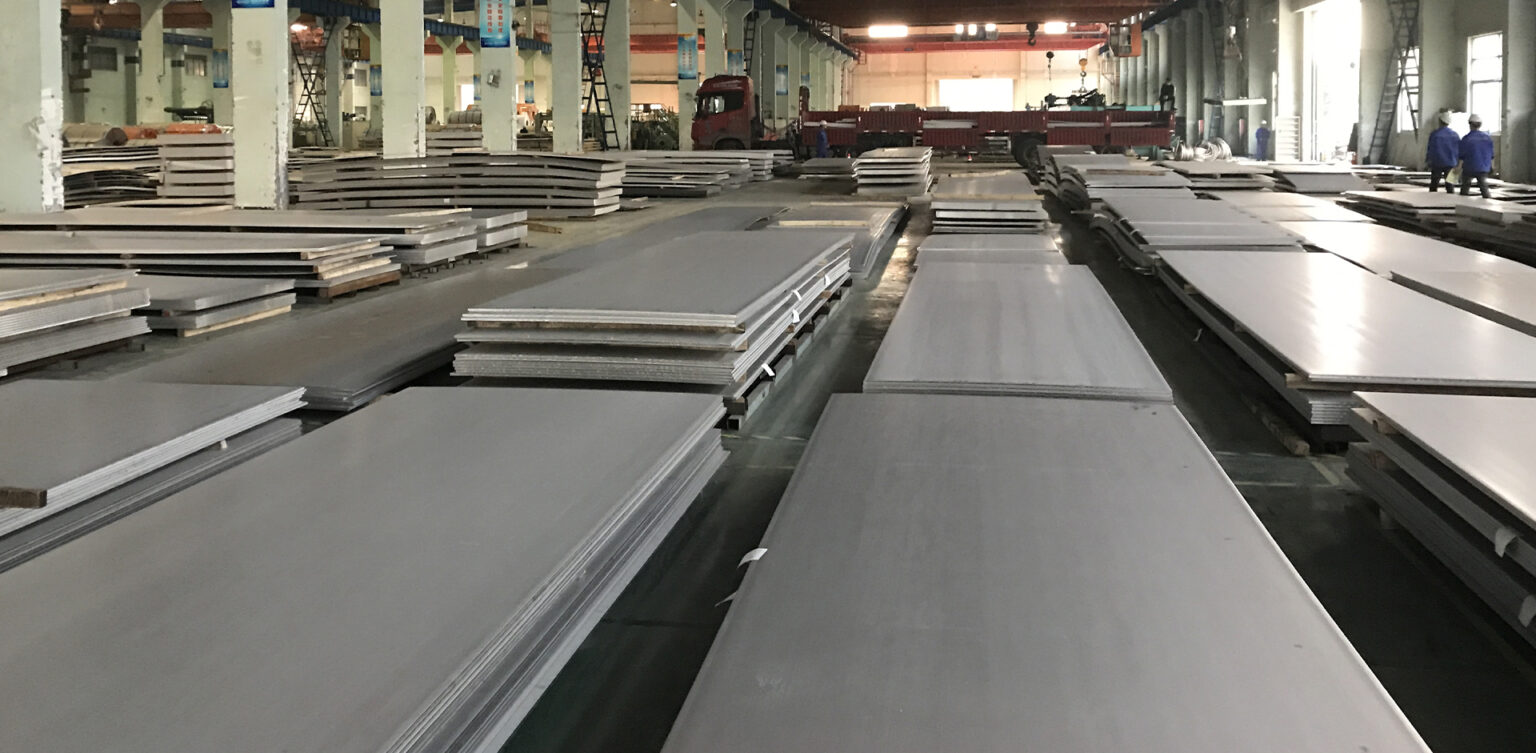Stainless Steel 310 Sheets & Plates
The 310 Stainless Steel Plate is made up of medium carbon austenitic stainless steel, which is primarily suitable for various high temperature applications. Due to their improved tolerance to high temperature, these plates are widely used in furnaces and the equipment for heat treatment. For continuous services, it is used at 1150 degrees C, and for intermittent service, the temperature is 1035 degrees C. The ASTM A240 UNS S31000 Plate is typically used in radiant tubes, cryogenic structures, combustion chambers, burners, and so on.
The wide variety of applications of SS 310 Plate is because of the unique properties it possesses. It has around 25% chromium and 20% nickel in its chemical composition, which makes it highly resistant to both corrosion and oxidation. There are both high and low carbon versions of the material- the low version one is less prone to sensitization and embrittlement. The AISI 310 Plate plate is widely used in applications in the atmosphere that contains reducing sulfur. It is also used in the moderately carburizing atmosphere, like in the petrochemical industry. The SUS 310 Plate should not be used in case of frequent liquid quenching, this is because it suffers from thermal shock. The 310 grade is popularly used for various cryogenic applications because of its improved magnetic permeability and toughness.
The DIN 1.4840 Plate material cannot be hardened by the heat treatment process. They are in fact hardened by cold working, which is a rarely used procedure. The 310 grade is basically forged within the temperature range of 975 – 1175 degrees C. Post the forging process, annealing is recommended, which helps in relieving all the stress caused due to the forging process. The UNS S31000 Plate can however be readily formed with the help of standard equipment and methods. It has a similar machinability like that of the 304 grade. The process involves the usage of powerful machineries and heavy tools.
The 2B Finish Stainless Steel 310 Plate possesses good weldability and can be welded using the standard procedure and equipment. They show a good resistance to carburization, oxidation, and sulphidation. It offers good resistance to corrosion but chloride related stress corrosion cracking might occur in chloride containing corrosive liquid at temperatures which exceed 100 degrees C.

Stainless Steel 310 Sheets and Plates are popular materials in the stainless steel family, known for their high-temperature resistance and corrosion resistance. Here’s some information about Stainless Steel 310 Sheets and Plates:
- Stainless Steel 310 contains primarily:
- Chromium (Cr): Approximately 24-26%
- Nickel (Ni): Approximately 19-22%
- Iron (Fe): Makes up the balance of the alloy
- It also contains a small amount of manganese and silicon.
- High Temperature Resistance: Stainless Steel 310 is highly resistant to high-temperature environments, making it suitable for applications in heat treatment furnaces, exhaust systems, and other high-temperature industrial settings.
- Corrosion Resistance: It offers good resistance to oxidation and sulfidation at elevated temperatures and moderate resistance to corrosion in various environments.
- Strength:stainless Steel 310 has good mechanical properties, with high tensile and yield strength.
- Applications:Stainless Steel 310 Sheets and Plates are commonly used in a variety of applications, including but not limited to:
- Heat Treatment Equipment:Furnace components, conveyor belts, and burners.
- Chemical Processing:Reactors, retorts, and thermal processing.
- Oil & Gas: In high-temperature and corrosive environments.
- Power Generation: Boiler components and other high-temperature equipment.
- Food Processing: Conveyor systems and equipment in food production.
It’s important to choose the appropriate form, size, and surface finish based on your specific requirements and the conditions in which the material will be used. Additionally, proper welding and fabrication procedures should be followed to maintain the corrosion resistance and mechanical properties of Stainless Steel 310.
size range
Material Certification and Traceability
At Satyam Overseas, we prioritize Material Certification and Traceability. Our materials, meeting ASTM and ASME standards, come with 3.1 Mill Test Certificates as a guarantee of compliance. Additionally, upon request, we provide 3.2 Mill Test Certificates for added assurance. Every material is clearly marked and accompanied by a corresponding certificate, meticulously linking markings to certification. This meticulous approach ensures complete accountability and unwavering reliability throughout our supply chain.
Chemical Composition
| Element | Chromium (Cr) | Nickel (Ni) | Iron (Fe) | Manganese (Mn) | Silicon (Si) | Carbon (C) | Phosphorus (P) | Sulfur (S) |
|---|---|---|---|---|---|---|---|---|
| Composition Range | 24.0 – 26.0% | 19.0 – 22.0% | Balance | ≤ 2.00% | ≤ 1.50% | ≤ 0.08% | ≤ 0.045% | ≤ 0.030% |
physical properties
| Property | Density | Melting Range | Specific Heat Capacity | Thermal Conductivity | Electrical Resistivity |
|---|---|---|---|---|---|
| Value | 7.9 g/cm³ | 1402 – 1449°C (2556 – 2630°F) | 0.50 J/g°C (0.12 Btu/lb°F) | 14.2 W/m·K (9.7 Btu·in/ft²·h·°F) | 0.78 μΩ·m (77 μΩ·in) |